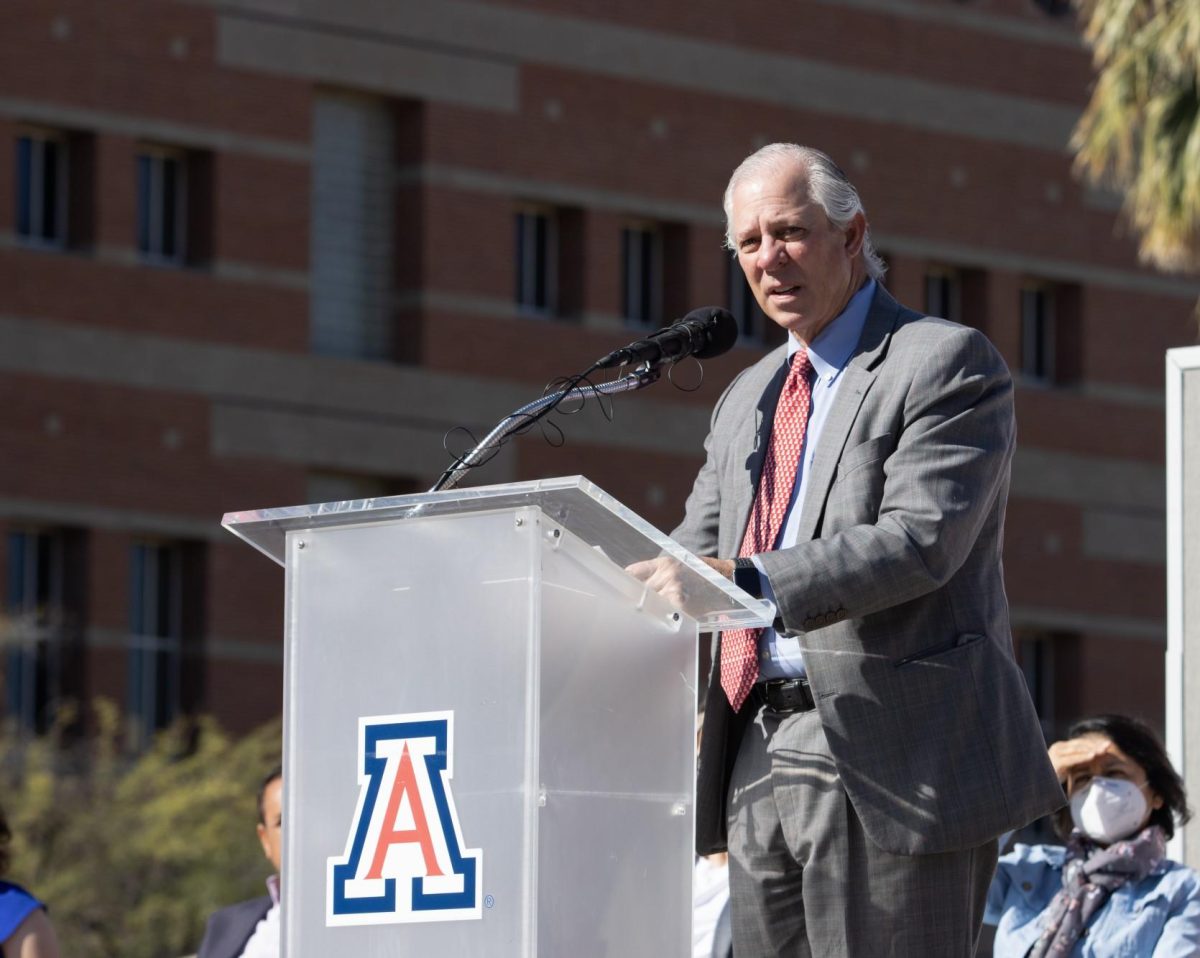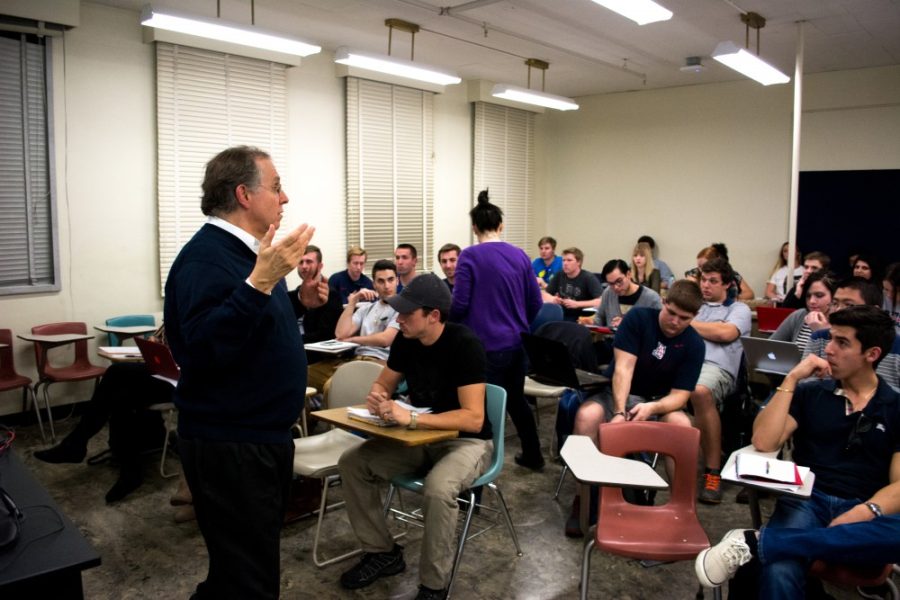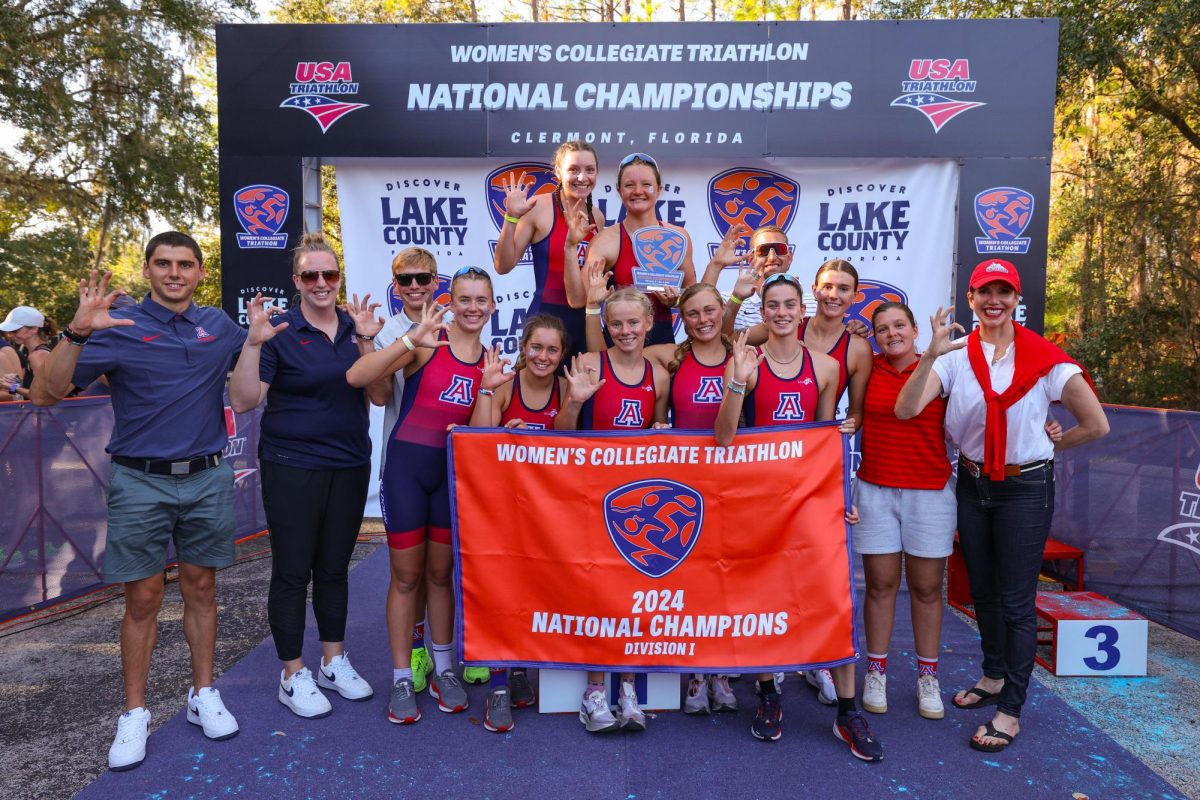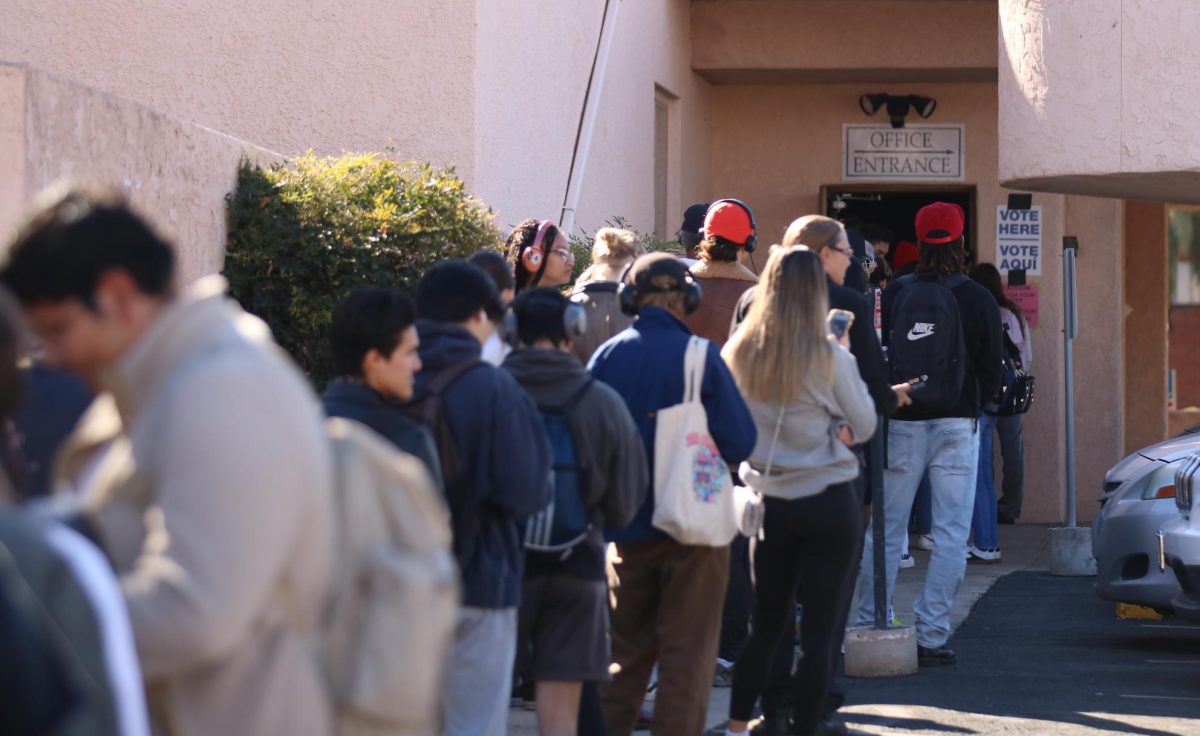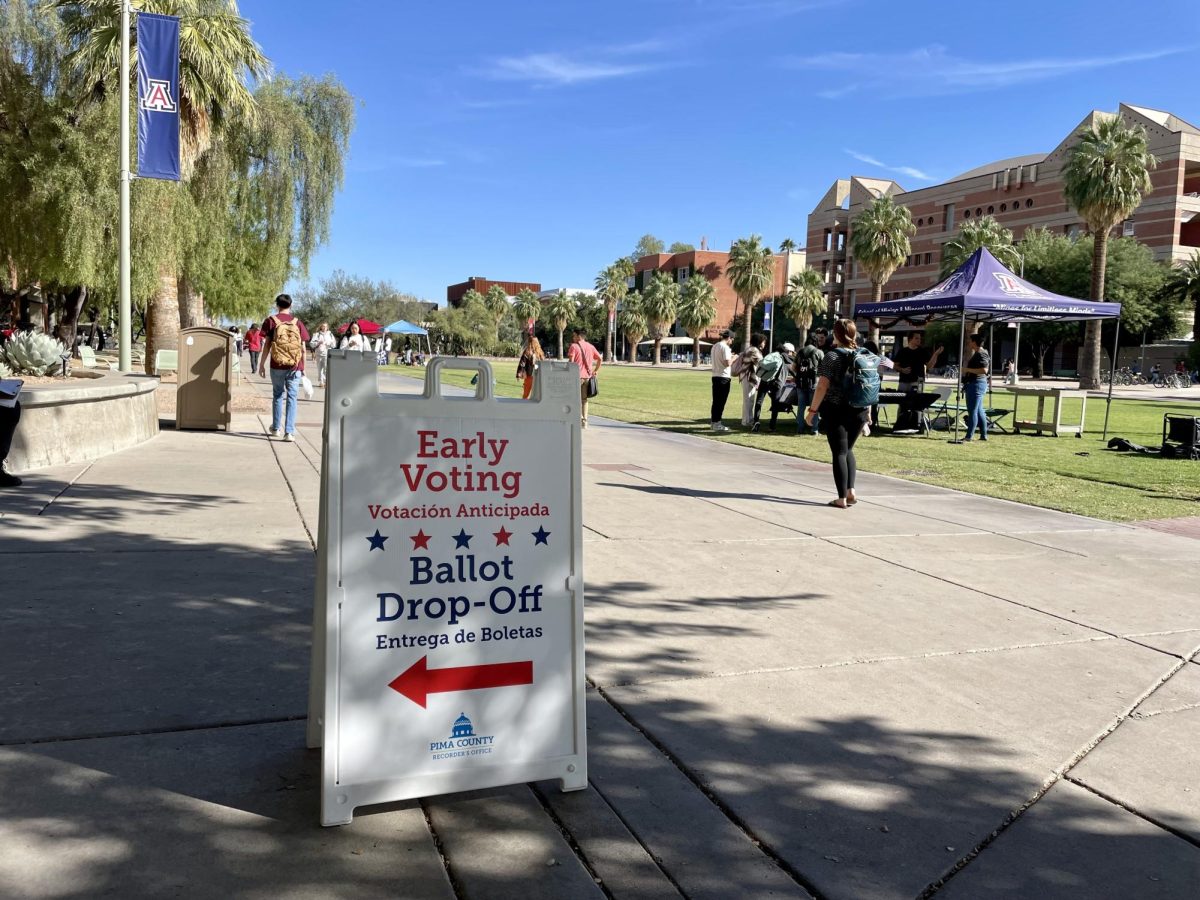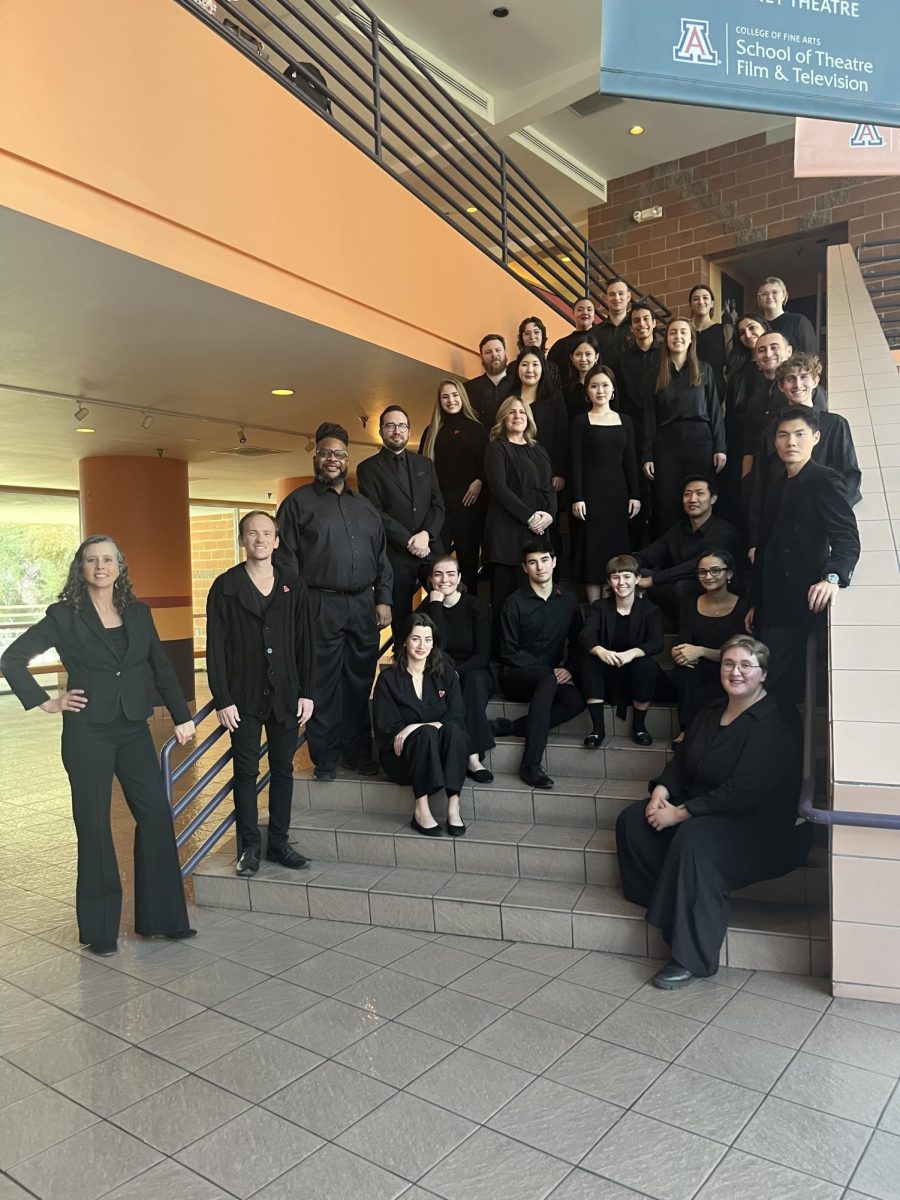Demands for accountability, transparency and action dominated the first half of the Arizona Board of Regents meeting held at the University of Arizona on Nov. 16. Much of the outrage was directed towards UA President Dr. Robert C. Robbins who was in attendance, including a “Shame on you!”
This meeting took place in the aftermath of the UA recently announcing serious cash flow issues (an approximate $240 million shortfall). The sources of what many community members are calling a “crisis,” are numerous, as are the potential solutions.
However, many of the university’s proposed solutions to the issue have generated outraged responses from the campus and surrounding Tucson communities.
“We made a bet on spending money, we just overshot”
In a report to the board of regents on Nov. 2, UA officials estimated that the amount of cash the university had on hand for the current fiscal year was off by $240 million. Instead of having 156 days of cash on hand, as was planned, the university now has a projected 97 days of cash.
Robbins cited numerous sources of cost to the university as potential reasons for this disparity, including scholarships/financial aid offered to this year’s incoming class and the athletics department.
“The growth of what we achieved in bringing our class in, that costs money, you know $200 million a year in financial aid, a lot of it, merit support as well as need-based aid. The growth in research has come about because of specific strategic investments,” Robbins said at the Nov. 2 meeting. “There are a few units across the university that are struggling, not the least of which is athletics. We had assumed when we used days cash on hand to support athletics that there would be an increase in revenue, and it has just not turned out to be the case.”
As reported by AZCentral, the university gave its athletics department $53.3 million in 2021, in the midst of the COVID-19 pandemic. According to this same report, this “was nearly five times more than the school provided its athletics department the year before,” and $40.2 million of that funding was a loan for athletics to repay (with interest) over a period of 15 years.
According to Robbins, this funding of athletic programs through the university was a new practice, one being done in athletic departments across the country. Robbins also noted that the UA is not unique in its athletics-related finance issues.
“We’ve never funded athletics out of the university. It’s been what I would call a ‘formula auxiliary unit’ that floated on its own bottom and now that’s not sustainable. So I think you’re seeing more universities starting to fund athletics, which is not something that we’ve ever done, and we’ve done it through our internal loans, which came out of our days cash on hand,” Robbins said. “Show me an athletic department that’s making money. It’s a universal thing.”
“A series of Draconian cuts”: Proposed solutions spark outcry
Members of the campus community showed up to the Nov. 16 ABOR meeting in droves to demand accountability from senior leadership at the university and to protest some of the UA’s proposed solutions to the issue.
One of the tactics offered by Robbins was the potential elimination of, or alterations to, the UA’s guaranteed tuition program. While Robbins recognized that this four-year guarantee on tuition is a “great differentiator” for the university, he also noted its costliness.
This program is the UA’s “commitment to provide students with a constant tuition rate and mandatory fees, as set by the Arizona Board of Regents for eight (8) continuous semesters (summer and winter sessions excluded), beginning with the term of an Undergraduate student’s initial enrollment on the Main Campus,” according to the Bursar’s Office.
Students, faculty and staff at the university expressed fear, anger and frustration towards this proffered solution to the UA’s financial situation. Eddie Barron, executive vice president of the Associated Students of the University of Arizona, spoke to this concern at Thursday’s ABOR meeting.
“When President Robbins announced the university’s financial crisis and the ways he’s looking to recover from it, I was riddled with fear and anxiety, not only for myself but for future students who didn’t grow up in a wealthy family who could afford to pay for their college education,” Barron said. “When the thought of less opportunities for scholarships crosses my mind, I think of my little sister, my younger cousins, and the opportunity of obtaining higher education that we rip from them simply because they cannot afford it. Low income students shouldn’t have to pay for a miscalculation of $240 million that happened under President Robbins and Lisa Rulney’s watch.”
Rulney is the senior vice president for business affairs and the chief financial officer at the UA. She presented the UA financial status update to ABOR on Nov. 2, and during this presentation noted that the university needs to “have a university-wide approach” with “targeted methods for specific units that have acute issues.”
“In fiscal year 2024, a 2% budget reallocation across the institution, and we are considering methods such as pausing capital projects, hiring freezes not implementing a salary increase program for fiscal year 25, revisions to our budget process and possible additional reallocations,” Rulney said.
Regent Larry Penley noted the potential solutions offered by Rulney and presented a more dire outlook on the necessary actions for the UA to resolve this problem.
“You’ve got some immediate actions that have to be taken in the next 60 days. You’ve got to cut salaries, withhold salaries, or whatever you have to do to reclaim money from the units. You’re going to have to, I believe, force a reclaim of budget in your units, your colleges, of some percentage amount,” Penley said. “You’re going to have to either terminate people, stop purchasing, or do something else […]. Clearly you’re going to have to have a hiring pause unless there’s an absolute necessity. But then you’ve got some longer-range actions that I think are absolutely essential […]. You have a centralized budgeting program that has to be put in place immediately. You have also, based on your admissions and your use of scholarship money, overspent on all that you’ve admitted. Complete remodeling on the scholarship/financial aid issue has to occur before this gets underway next year.”
These suggestions are also points of concern for members of the campus community.
Faculty members and staff, who are already struggling to make a living with their current salaries, are concerned about potential salary reductions.
Theresa Fisher, a postdoctoral research associate at Steward Observatory, condemned the university’s proposed cuts, arguing that those bearing no responsibility for its financial problems should not be punished.
“I find it inexcusable for the UA to have mismanaged $240 million when some of its most highly trained and credentialed employees are living on such tight margins. And, not only that, we’re now facing the threat of further cuts while those responsible receive little accountability,” Fisher said.
Jon LaGuardia, a lecturer within the UA’s English department, called upon ABOR to increase the salaries of lecturers.
“Our wages have stagnated at a base rate of $44,000 since 2018 […]. [They] show unfavorable comparisons with our peer institutions […]. Many of us have taken on second or third jobs, taking on courses at other institutions or in other departments at the UA,” LaGuardia said. “As you consider strategies to rebuild cash on hand, we ask you to remember that working conditions are our students’ learning conditions. Investment in us is investment in them.”
Members of the community also showed concern that the steps taken to resolve this “crisis” would result in a disproportionate burden placed on certain minority groups.
“An increase in tuition not only means more debt and limitations on my future, but by doing so, you are furthering the existing disparities that you all continue to sow deep within the grounds of Tucson. As you all market for more students to attend this school, you fail to meet the needs of students that are already here,” Sara Kandel, ASUA administrative vice president, said to ABOR at Thursday’s meeting.
“Financial stress significantly impacts Black, brown and queer student success, and with recent data provided by the Black Student Success study, the data highlights disparities by Black students that are met with financial concern. 41.6% of Black respondents neglected their academic work, as opposed to 36.1% of all University of Arizona students when met with financial concern,” ASUA student body President Alyssa Sanchez said. “14.2% transferred to different schools as opposed to 10.5% of all UA students when met with financial concern. These statistics underscore the disproportionate burden of financial concerns on specific student groups, and as we address budgetary challenges, let’s prioritize investing in our students, especially those who are disproportionately affected by your decision.”
While community members from diverse backgrounds and perspectives spoke to the issue facing the UA, ingrained in every criticism of the university’s response presented at Thursday’s ABOR meeting was a demand for accountability from senior leadership.
“Students are sick and tired of constantly footing the bill for this university […]. Students shouldn’t be burdened by having to bail out an administration that treats this institution of higher education like a business by prioritizing athletics and failed investments in online universities while being so willing to cut scholarship funding for students at the snap of their fingers,” Barron said.
In the midst of this backlash, Robbins retained a positive outlook on the situation, assuring ABOR and the university community that he is confident in the UA’s ability to bounce back.
“We’ve got plans to address this issue, to build back the central reserves, and I’m confident that we will be successful,” Robbins said at the Nov. 2 meeting.
In his presentation of the “State of the University” report Thursday, Robbins highlighted many university accomplishments and initiatives, like the effort to increase the healthcare workforce, the creation of the Student Success District and the diversity of the 2023 incoming class. He also emphasized the significance of the UA’s research expenditures.
“Many of these investments we’ve made over the last five years have allowed us to grow the research expenditures, what we are projecting will be about $940 million next year […]. This puts us at number 20 for public universities and 36 overall, but this doesn’t happen without investment […], somebody has to put the seed money up for that,” Robbins said.
ABOR has requested that the UA submit its corrective action plan in writing by Dec. 15, “outlining the changes that will be made to rebuild cash levels and ensure that the proper controls are in place such that this does not happen again,” according to Regent Cecilia Mata.
Follow the Daily Wildcat on Instagram and Twitter/X



